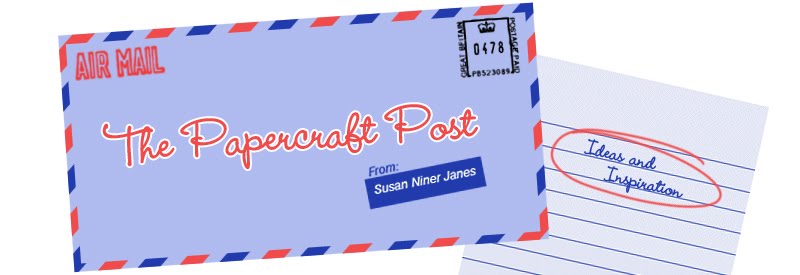 |
| Print-and-cuttables... inspired by American folk art. |
 |
| Dimension is added with layers of chipboard. |
These easy-make print-and-cut cards and envelopes recreate the rustic and welcoming look of the craft - no stitching required.
Here are your downloads. A tutorial follows.
PennyRugCardToppers.svg
PennyRugEnvelope.svg
PennyRugCardBlank.svg
PennyRugCardToppers.pdf
PennyRugEnvelope.pdf
PennyRugCardBlank.pdf
I've provided .svg files for digital print-and-cuts, and .pdf files for handcrafting. This project is do-able by hand - plenty of scissoring, but pretty easy. (Note: the selected font doesn't come out in the .svg. You can change the font in your cutting programe. I used Hobo.)
Penny Rug Cards and Envelopes Tutorial
Cards
1. Pieces for each card: 12 printed circles, oval message centre, oval card mat, and the shaped card blank. You also need 36 circles and three centre ovals cut from chipboard. I used the new Silhouette chipboard, which is a dream to work with - but you could also cut these pieces from a recycled cereal box.
2. Glue three chipboard circles together, edges aligned for each printed circle. In the same way, glue three chipboard layers together for the centre oval.
3. Ink the edges of the printed circles and oval, and of all the chipboard pieces, too. I've used Tim Holtz Distress Markers for the purpose. The inked chipboard really does have a felt-like appearance!
4. Glue the printed circles onto the chipboard discs with edges aligned. Likewise for the oval centre.
5. Score the fold in the card blank, fold it in half. Stick on the coloured mat, centred. To position the centre oval on the card front, place penny rug discs at 12, 3, 6, and 9 o'clock. Attach the centre oval first, using sticky pads (3D Foam Squares from Scrapbook Adhesives by 3L are ideal for the job), then attach the first four penny rug discs.
6. To complete the card front, stick on two discs between each of the original four "clock face" discs. Do not put like-coloured discs next to each other.
7. You can use a print-out of the card topper as a placement guide.
8. Above: placing the last disc. The discs all fit perfectly in the available space. The card is now finished.
Envelope
1. Above, the bits you need to make the envie. Print out the envelope and cut it out. (Note: if digi-cutting, the envelope is a tight fit on the page. The digital cutter will not cut out the entire envelope - you can finish cutting by hand - the digital cuts will act as guides.)
2. Prep secret: glue a small chipboard disc onto the back of the brad mat. This acts like a button shank - it gives the mat a bit of lift, so it is easy to wind the thread under it. Pierce or punch a small hole in the middle of each brad mat, through the chipboard. Also pierce a small hole in the middle of the centre disc in the envelope border pattern.
3. Place a brad through both brad mats. Attach the brad and mat through the hole at the envelope bottom. Cut a piece of craft thread and make a slip knot. Tighten the slip knot around the arms of the remaining brad. Insert the threaded brad through the hole on the envelope flap.
4. To complete the envelope, fold in the side flaps, apply adhesive to the sides of the bottom portion. Fold and stick as shown. Slide the card in. Secure by winding the thread in a figure-of-eight around the brads.
Like so:
More pics:
A folk craft updated for the digital age!



















No comments:
Post a Comment